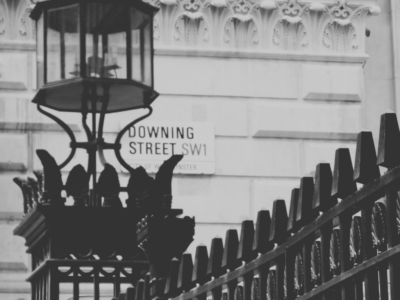As the Brexit deal gains traction in the press as the UK waits for it to be put before parliament in December, the most recent stress test for the UK’s economy has been recently released by the Bank of England.
The 2018 stress test is the first to be undertaken by the Bank of England under a new accounting standard titled the International Financial Reporting Standard 9 (IFRS 9) and it has been conducted under the internationally agreed transitional arrangement.
The stress test was carried out in order to measure the resilience of the UK’s banks and financial infrastructure to ascertain how they would be affected by a theoretical financial crisis or ‘stress’, such as a hard recession or a global economic crisis. The goal for the Bank of England was to identify potential areas of excessive risk to the UK economy.
The UK’s major banks had continued to improve their capital positions since the previous stress test recorded earlier in 2018. The UK’s major banks recorded an aggregate common equity Tier 1 (CET1) capital ratio almost three and a half times greater than levels recorded before the 2008 global financial crisis, according to the most recent stress test.
The UK’s banking infrastructure appears resilient to any potential deep and simultaneous recessions that could occur in the UK or global economies. Additionally, it suggests that it could withstand the impact of a more severe global financial crisis than that which occurred in 2008 as well as a high fall in asset prices, according to the recent stress test report.
Should the UK’s major banks face similar loss rates consistent to those faced during the 2008 global financial crisis, their aggregate CET1 ratio, after a potential financial stress event, would still remain twice the level before the perceived crisis. The UK’s major banks are all above their CET1 capital and Tier 1 leverage thresholds, which would mean they would be able to continue functioning for the economy during another financial stress.
All of the UK’s major banks that participated showed they had increased their awareness of effective risk management models and implemented these into their company framework, according to the recent stress test. However, there were some banks that were required to improve their internal processes for risk management. This includes more effective risk modelling.
The results showed that should the world GDP fall by 2.4 per cent and China’s GDP fall 1.2 per cent, the UK’s GDP would drop 4.7 per cent, with unemployment rising to 9.5 per cent. Also UK residential property prices would drop 33 per cent and commercial property prices would fall by as much as 40 per cent.
The UK Bank Rate would increase to 4 per cent and the sterling exchange rate index would decrease by 27 per cent, according to the recent stress test from the Bank of England.
The stress test and Brexit
After the 2016 referendum that resulted in the UK voting in favour of Brexit, The Financial Policy Committee (FPC) identified the level of risk and disruption to the UK economy that could potentially occur after the withdrawal from the EU on Brexit Day 2019, in order to conduct extensive contingency plans.
The recent stress test results showed that UK banks would be able to manage in the event of a crisis comparable to the 2008 global financial crisis that might occur with a disorderly exit from the European Union, according to the Bank of England. As a result, the FPC has concluded that the UK economy can withstand considerable negative impact and will be able to continue function for UK households and businesses in the event of a no deal Brexit.
This conclusion was made by looking at the changes and measures that have been introduced by the UK’s major banks as a result of the 2008 global financial crisis. These changes include a reduction in their reliance on wholesale funding, combined with the risk management strategy adopted by the Bank of England. Furthermore, the UK’s major banks can access up to £300 billion of liquid capital via the facilities operated by the Bank of England, should this be necessary.
However, there would still be considerable economic volatility in the event of a no deal Brexit, but this would be more similar to the impact on the economy immediately following the referendum result in 2016 rather than the 2008 financial crisis. This means the UK sterling stock market would still be able to function following a no deal Brexit, and the core of the UK’s financial infrastructure, which includes insurance companies, dealers and banks, would be able to continue operating, according to the Bank of England.
In terms of how the UK property market would fare in the event of a no deal Brexit, there are clues when observing the slowing in the market in recent months. Richard Watkins, land and planning director at Aston Mead, commented: “Any degree of political or economic uncertainty means that buyers tend to sit on their hands. People with important and costly decisions to make tend to pause and reflect”
“Waiting for a time when the outcome is more predictable. The ongoing machinations of the Brexit process for the last two years are no exception – so little wonder that the property market has become increasingly subdued as time has gone on.
“But it’s also true to say that this situation has led to an undeniable pent-up demand – especially in London and the South East – which is likely to make itself evident, once Britain leaves the European Union on the 29th of March next year.
“What’s more, despite the risks involved in the current challenging market conditions, we expect that come April 2019, those hoping to trade up will find that the gap in sale values and onward purchase prices will be the narrowest it has been for half a decade. So there continue to be real opportunities out there.”
Until Prime Minister Theresa May’s Brexit deal is voted on in parliament, there will continue to be uncertainty both in the property market and the wider UK economy as a whole. However, according to the recent findings from Aston Mead, there is a better outlook for the property market in 2019 than one might think.






















Comments